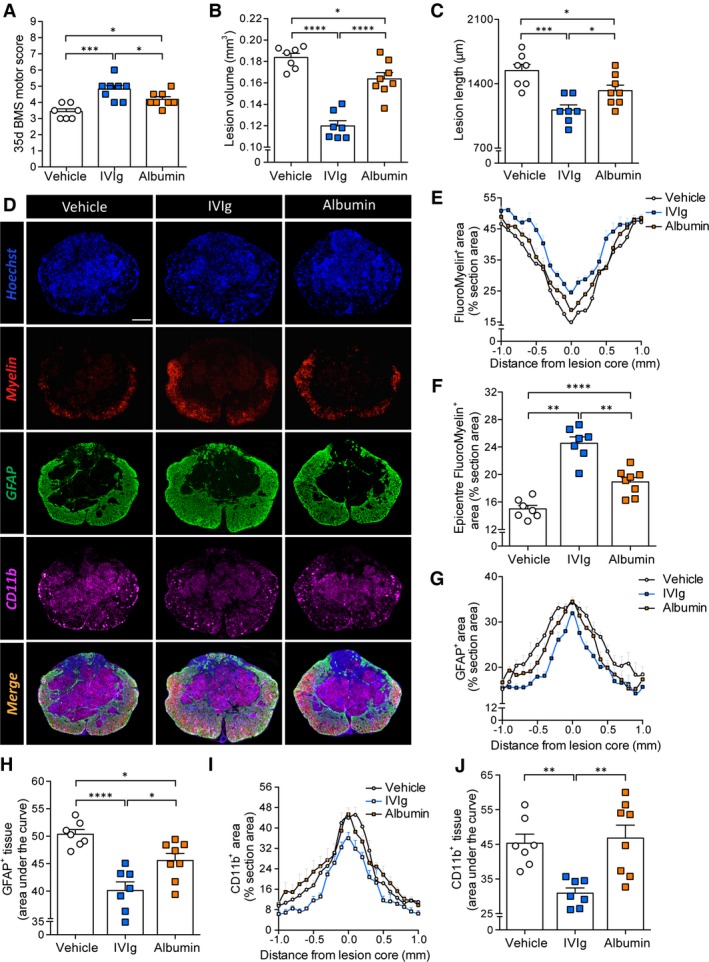Figure 7.

IVIg is more effective than albumin in improving spinal cord injury (SCI) outcomes. (A) Endpoint BMS locomotor scores showing that IVIg significantly improves the functional recovery compared to both vehicle‐ and albumin‐treated SCI mice. (B, C) IVIg therapy also significantly reduced lesion volume (B) and lesion length (C) compared to both vehicle and albumin treatment. (D) Representative sections of the lesion epicenter at 35 days post‐SCI for each of the experimental groups. (E, F) IVIg treatment resulted in increased myelin, around (E) and at (F) the lesion epicenter (35 days post‐SCI). Note the significantly improved outcomes compared to both vehicle and albumin treatment (F). (G, H) Analysis of GFAP immunoreactivity around the lesion site (G) showed more confined astrogliosis in IVIg‐treated mice compared to either vehicle or albumin treatment. “Area under the curve” analysis confirmed this result (H). (I, J) Spatial analysis of CD11b staining up to 1 mm on either side of the lesion epicenter (I) indicated that only IVIg treatment significantly reduced the CD11b+ infiltrate at the lesion epicenter, which was again confirmed by “area under the curve” analysis (J). All data are presented as mean ± SEM. (A–C, F, H, J) *P < 0.05; **P < 0.01; ***P < 0.001; ****P < 0.0001; one‐way ANOVA with Newman–Keuls post hoc test; n = 7–8 per experimental group. Scale bar: D (top left): 200 μm. ANOVA, analysis of variance. BMS, Basso Mouse Scale; GFAP, glial fibrillary acidic protein.
